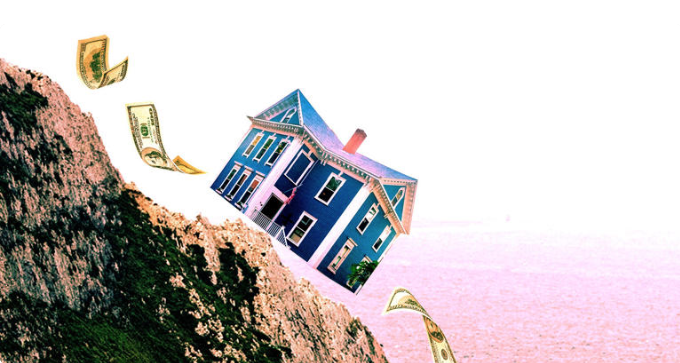In Nantucket, Massachusetts, erosion is intensifying and sea levels are rising.
Demand for multimillion-dollar homes, though, has remained sky-high.
||| FROM BUSINESS INSIDER |||
This month, residents of the island of Nantucket, a storybook New England coastal retreat located 30 miles off the coast of Cape Cod, gathered for their annual town meeting and quietly acknowledged a mounting eco-crisis.
Erosion, which is typical for most islands, is now increasing in severity, threatening to reshape Nantucket’s downtown and wash away the homes sitting on its edge. Permanent residents formally approved the designation of the entire island as an “Islands Coastal Resilience District,” with hopes that state-backed help could follow.
A lot of real estate value is at stake. Over the past two centuries, Nantucket has gone from a whaling town to a hippie refuge to a holiday hot spot for billionaires. Its year-round population hovers at about 14,000, but over the summer, it balloons to 80,000 as the likes of Blackstone’s Steve Schwarzman and former Google CEO Eric Schmidt, who own picturesque grey-shingled mansions lined with blooming hydrangea, descend on the island in their private jets, sporting Nantucket red and boat shoes.
But a changing climate is exacerbating the ever-present threat of erosion, and it’s claiming more victims. Last month, real estate investor Barry Sternlicht had to demolish his home to prevent it from falling into the ocean; others with valuable beachfront properties have paid millions to move their houses further away from the sandy coast.
And it’s only expected to worsen in the “foreseeable future,” C. Elizabeth Gibson, the town manager, wrote in the 2021 Coastal Resilience Plan. “The risks for Nantucket, a maritime community, are significant.”
In total, sea level rise, coastal flooding, and erosion are estimated to cause over $3.4 billion in cumulative damages to Nantucket over the next five decades, according to the plan.
But demand for properties has remained sky-high on the idyllic island. Last year’s median home sale price was $3.2 million, up from $1.9 million five years prior, according to data from local firm Fisher Real Estate. Twenty-seven percent of the homes sold cost more than $5 million.
“The concentration of wealth is quite stunning on Nantucket, and it keeps escalating,” Bruce Percelay, a real estate developer and the publisher of the island’s N Magazine, who has been vacationing on Nantucket for nearly all of his life, told Business Insider. “To use a well-worn phrase, come hell or high water, people are still buying multimillion-dollar homes on Nantucket.”
**If you are reading theOrcasonian for free, thank your fellow islanders. If you would like to support theOrcasonian CLICK HERE to set your modestly-priced, voluntary subscription. Otherwise, no worries; we’re happy to share with you.**










“The island is, as residents like to remind you, nothing more than a sandbar, and erosion was causing destruction long before terms like climate change were part of the common vernacular.”
If I recall correctly, a rather well known fellow from the middle east once used this building-upon-the-sand as a metaphor:
“And every one that heareth these sayings of mine, and doeth them not, shall be likened unto a foolish man, which built his house upon the sand: And the rain descended, and the floods came, and the winds blew, and beat upon that house; and it fell: and great was the fall of it.”
Wealthy techies flying in on their private jets for the weekends, trying to blend in with the locals, while contributing to problems that make life worse for everyone who lives there. Sounds familiar! Our local struggles are universal.
“In total, sea level rise, coastal flooding, and erosion are estimated to cause over $3.4 billion in cumulative damages to Nantucket over the next five decades, according to the plan.”
Climate change and ecological overshoot are real. Minimizing this reality is nothing more than hiding your head in the sand.